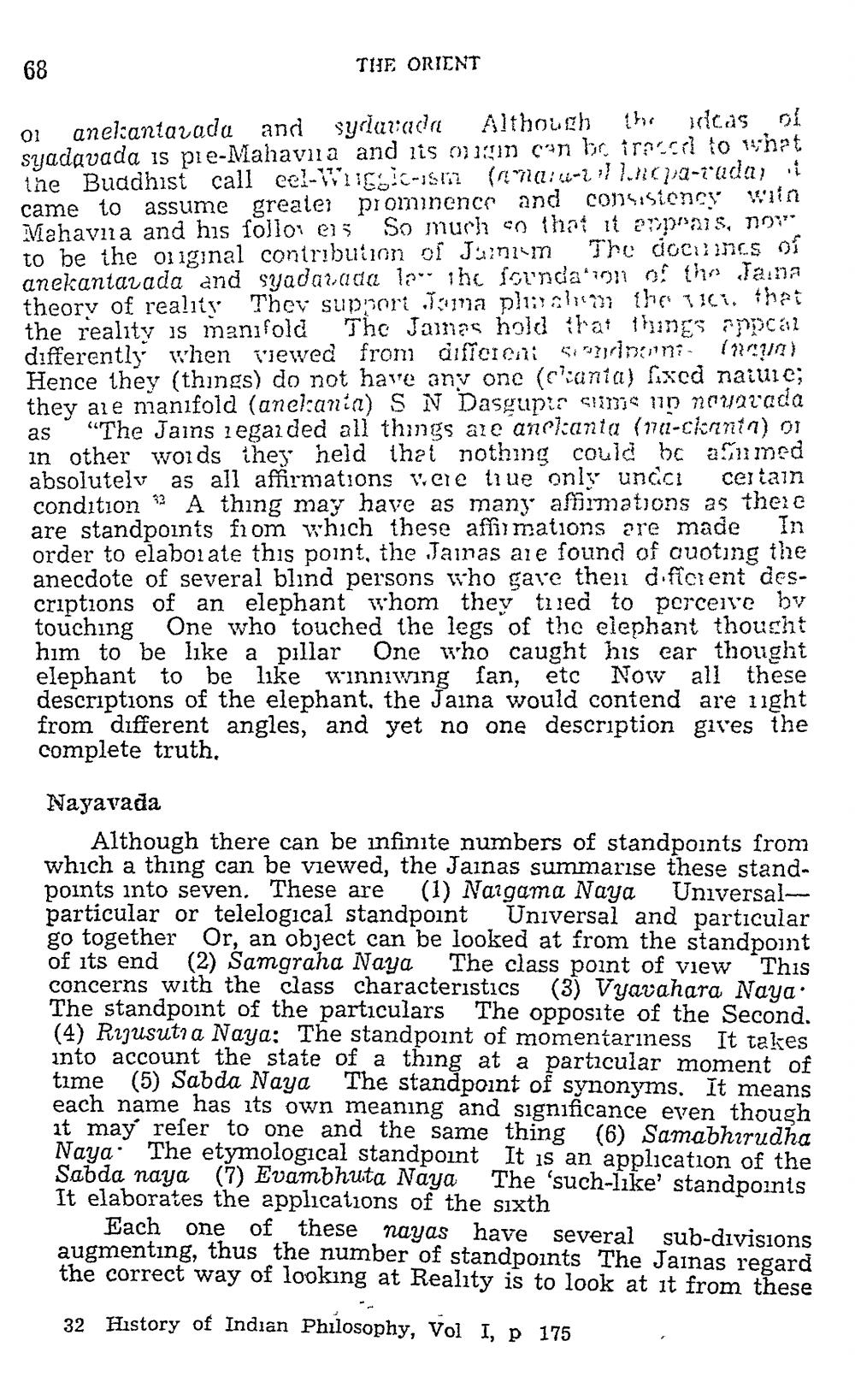________________
68
THE ORIENT
01
the
sydavada Although anekantavada and ideas of syadavada is pie-Mahavia and its origin can be traced to whet the Buddhist call eel-Wiggic-ism (anau-il lncpa-rada, A came to assume greater prominence and consistency with Mahavia and his follo els So much so that it appeals, nov The docuncs of to be the original contribution of Jainism anekantavada and syadarada le the foundation of the Jaina theory of reality They support Joma plan the vici. that the reality is manifold The James hold that things appcal differently when viewed from different sednomi- (aqua) Hence they (things) do not have any one (kanta) fixed nature; they are manifold (anekanta) S N Dasgupte sums up nouavada "The Jains 1egaided all things are anekanta (na-ckanta) or in other words they held that nothing could be asumed absolutely as all affirmations were true only undcı certain condition A thing may have as many affirmations as theie are standpoints from which these affirmations are made In order to elaborate this point, the Jainas are found of quoting the anecdote of several blind persons who gave then different descriptions of an elephant whom they tied to perceive by touching One who touched the legs of the elephant thought him to be like a pillar One who caught his ear thought elephant to be like winniwing fan, etc Now all these descriptions of the elephant, the Jaina would contend are light from different angles, and yet no one description gives the complete truth.
as
Nayavada
This
Although there can be infinite numbers of standpoints from which a thing can be viewed, the Jainas summarise these standpoints into seven. These are (1) Nargama Naya Universalparticular or telelogical standpoint Universal and particular go together Or, an object can be looked at from the standpoint of its end (2) Samgraha Naya The class point of view concerns with the class characteristics (3) Vyavahara Naya The standpoint of the particulars The opposite of the Second. (4) Rijusuti a Naya: The standpoint of momentariness It takes into account the state of a thing at a particular moment of time (5) Sabda Naya The standpoint of synonyms. It means each name has its own meaning and significance even though it may refer to one and the same thing (6) Samabhirudha Naya The etymological standpoint It is an application of the Sabda naya (7) Evambhuta Naya The 'such-like' standpoints It elaborates the applications of the sixth
Each one of these nayas have several sub-divisions augmenting, thus the number of standpoints The Jainas regard the correct way of looking at Reality is to look at it from these
32 History of Indian Philosophy, Vol I, p 175




